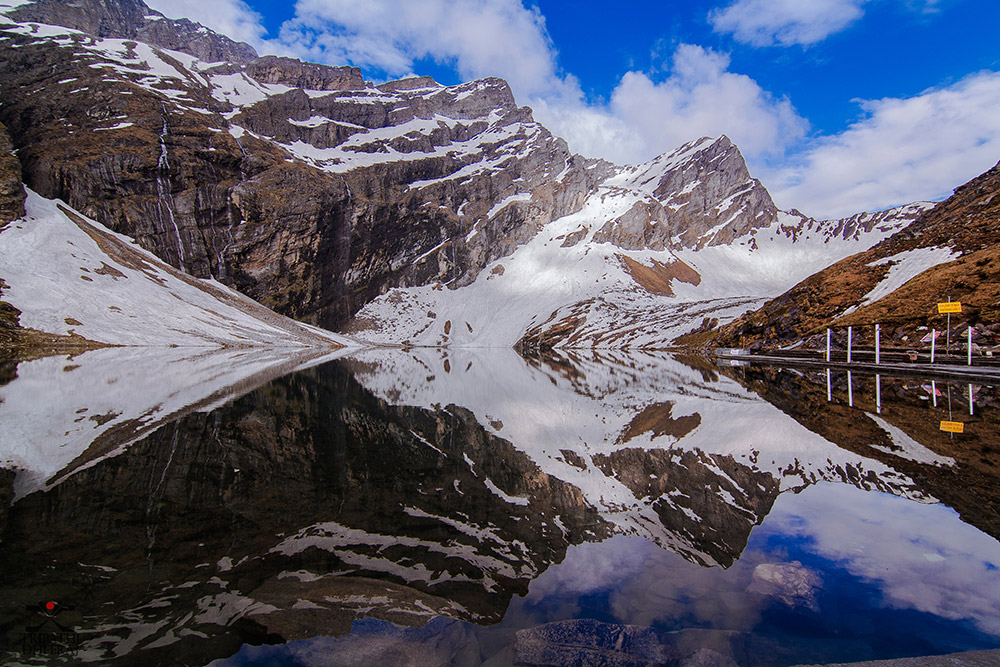Hemakund Lake

Description
The lake is situated at an altitude of 4329 meters and is fed by the Hathi Parvat and Sapt Rishi glaciers. The lake is encircled by seven snow peaks known as Saptashringa peaks. Hemkund Lake is about 2 km in circumference. The clear, still waters of the lake mirror images of the peaks. Hemkund is a 15 km trek from Govindghat, which is on the bus route to Badrinath.
Religious Significance
The holy lake is associated with the tenth Sikh Guru, Guru Gobind Singh. In his autobiographical poem ‘Bichittar Natak’, the Guru wrote that in his previous life he meditated on the shore of a lake that was surrounded by seven snow-capped mountains. The banks of the Hemkund Lake is believed to be this place. A dip in the waters of the lake is considered sacred by the Sikhs.
The star-shaped gurudwara (Sri Hemkund sahib) located on the banks of the lake is one of the most important pilgrimage sites for the Sikhs.Hemkund is also sacred for the Hindus. According to Hindu mythology, Hemkund is where Lakshman (Lord Rama’s brother) did his penance. The mythological name for Hemkund is ‘Lokpal’. There is a temple dedicated to Laxman on the banks of the lake.The river flowing through this valley along the path from Gobindghat to Gobinddham is called Lakshman Ganga.
Ecological Significance
The trek from Govindghat to Hemkunt is through forests of pine and rhododendron where wild roses, ferns, and alpine flowers bloom. The king of the Himalayan flowers Saussurea obvallata, popularly known as ‘Brahma kamal’ is found in abundance here. Pilgrims / tourist to Hemkund often collect flowers and plants in large numbers adversely affecting the ecology of the region.



Place of Origin: Garhwal Himalayas, Uttaranchal (near Valley of flowers)